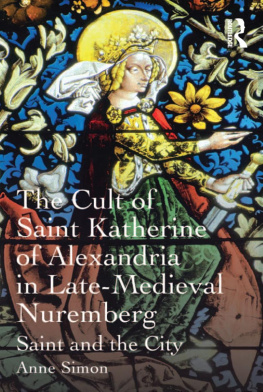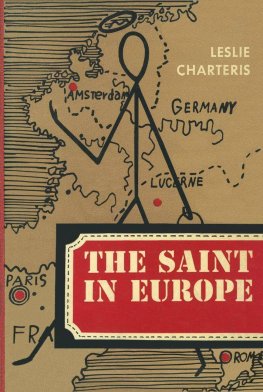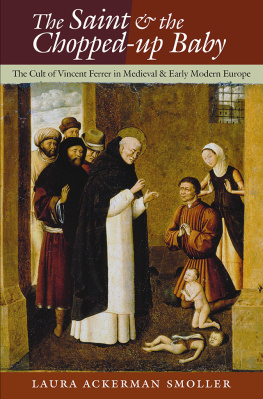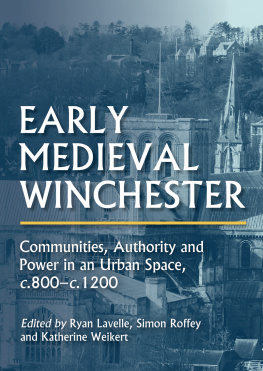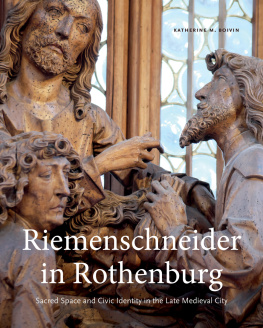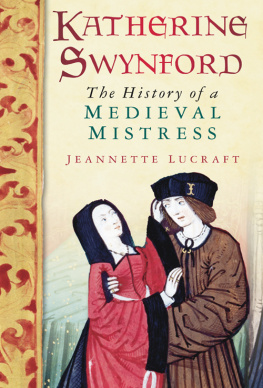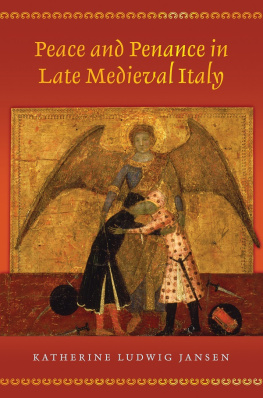First published 2012 by Ashgate Publishing
Published 2016 by Routledge
2 Park Square, Milton Park, Abingdon, Oxon OX14 4RN
711 Third Avenue, New York, NY 10017, USA
Routledge is an imprint of the Taylor & Francis Group, an informa business
Copyright 2012 Anne Simon
Anne Simon has asserted her right under the Copyright, Designs and Patents Act, 1988, to be identified as the author of this work.
All rights reserved. No part of this book may be reprinted or reproduced or utilised in any form or by any electronic, mechanical, or other means, now known or hereafter invented, including photocopying and recording, or in any information storage or retrieval system, without permission in writing from the publishers.
Notice:
Product or corporate names may be trademarks or registered trademarks, and are used only for identification and explanation without intent to infringe.
British Library Cataloguing in Publication Data
Simon, Anne.
The cult of Saint Katherine of Alexandria in late-medieval Nuremberg : saint and the city.
1. Catherine, of Alexandria, SaintCultGermanyNurembergHistoryTo 1500. 2. Nuremberg (Germany)Religious life and customs. 3. Religion and sociologyGermanyNurembergHistoryTo 1500.
I. Title
282.4'3324'0902-dc23
Library of Congress Cataloging-in-Publication Data
Simon, Anne.
The cult of Saint Katherine of Alexandria in late-medieval Nuremberg : saint and the city / by Anne Simon.
pages cm
Includes bibliographical references and index.
ISBN 978-1-4094-2071-2 (hardcover) 1. Catherine, of Alexandria, SaintCultGermanyNurembergHistoryTo 1500. 2. Catherine, of Alexandria, SaintCultGermanyNurembergHistory16th century. 3. Nuremberg (Germany)Religious life and customs. I. Title.
BX4700.C45S56 2012
235'2dc23
ISBN 9781409420712 (hbk)
ISBN 9781315615172 (ebk)
Preface
Any study of a city with as rich and complex a history as that of Nuremberg and with such a wealth of archives and primary source material will inevitably fail to do complete justice to every aspect of the topic under investigation. Any study of a saint whose cult was as widespread and popular as that of Saint Katherine of Alexandria in the Late Middle Ages will face similar problems of selection and omission. With world enough and time I would ideally have looked at Patrician wills, letters, late-medieval drama, variants on the legend and miracles of Saint Katherine in manuscript and print, altars, murals and windows etc. in churches around Nuremberg the list of possible sources is endless. Similarly, a comparison of the cult of Saint Katherine to those of Sebaldus and Lawrence, patron saints of the citys two principal churches, or to that of Saint Dominic, founder of the order to which the Katharinenkloster belonged, would doubtless have shed revealing light on the importance of Saint Katherine to the city, as well as of saints cults generally. However, this would also have resulted in a very different or unmanageably lengthy work, one in which Saint Katherine herself may have been submerged. Moreover, in trying to convey the interrelatedness of diverse aspects of Nuremberg life, played out as it was within mighty city walls and controlled as it was by a powerful Council, I may have written against the grain in places; or, indeed, presented arguments that overlap from one chapter to the next. So tightly knit were the ruling Patrician families, their identities and interests that overlap is almost inevitable. However, precisely therein lies the fascination of Nuremberg and of the saint who functioned virtually as the city logo, so I hope the reader will bear with any shortcomings this study will have. The same forbearing reader may consider the density of the footnoting one such shortcoming. However, information about the saint, the city and the Patricians who governed it has been culled, often piecemeal, from a wide variety of primary and secondary sources, not all of them particularly accessible; and it seemed crucial both to provide the evidence on which my arguments were based and to document its sources.
In the course of researching and writing one incurs many debts, which it is a pleasure to acknowledge. My sincere thanks go to the Deutscher Akademischer Austauschdienst and the Arts Faculty Research Fund, University of Bristol, for their funding of the archival research necessary for this book; as well as to the British Academy for the conference grant that enabled me to present part of , Showcasing a Saint, at the annual conference of the Medieval Academy of America, Vancouver 2008. Further thanks are due to the staff of the Germanisches Nationalmuseum Nuremberg and the Stadtbibliothek Nuremberg for their resourcefulness, patience and helpfulness; these are wonderful, civilized places to work. To Frau Margot Llhffel and Frau Christina Plewinski of the Stadt Nrnberg goes my gratitude for their kindness and generosity towards my students and for sharing with me their knowledge of and enthusiasm for their wonderful city. My debt to friends runs deep: without them this work may never have seen the light of day. Particular gratitude is due to Professor Marketa Goetz-Stankiewicz for the unwavering friendship, encouragement, support and belief in me that have sustained me for 30 years; to Dr Heike Bartel for her loyal friendship, for her helpful and sensitive reading of my work and for having greater faith in my scholarship than I have myself; and to Dr Rolf Keitel for his steadfast, generous, wise and supportive friendship. To Nicholas Ainsworth, Dr Jeffrey Ashcroft, Dr Ferdi Besselmann, Sharon Baker, Dr Birgit Beumers, Margaret Boakes, Henrietta Cassar, Elsie and David Cassidy, Juliet Cox, Professor David Darby, Peggy Davis, Majella Drew, Ron and Sue Diederichs, Deborah Draffin, Gunlg Eliasson, Malcom, Margaret and Ainslie Emery, Iris and Peter Fenger, Professor John Flood, Bertha Garrett, Michaela Gigerl, Alice Hawkins, the Hood family, Alison Maclaine, Father Tony MacDonald, Caroline McIntyre, Ilse Mozga, Professor Eva Neumann and Dr Wolf Zeitz, Professor Gaby Neumann, Professor Ivan Parvev, Professor Silvia Ranawake, Christa Santi, Professors Frank and Gisela Shaw, Steve Webb, Lynn Wharton and my other friends from Frimley and Camberley Grammar School my heartfelt thanks for their generous, supportive and unconditional friendship, which over the years has given me greater comfort, strength and delight than they may realize; and to Dr Ulrich Freudenstein for thoughtful care and laughter in painful times. To the students who took my Nuremberg option at the University of Bristol I owe thanks for their enthusiasm, commitment and contribution to my own knowledge of the city, as well as for the sheer fun of the classes. To Sam Atkins, Harriet Swindall, Ian Tompkins, Deborah Whitehead and Rike Borchers in particular I owe a huge and lasting debt for their loyalty, support and friendship during an exceedingly difficult year. Professor Henrike Lhnemann, Dr Liz Andersen and Dr Cyril Edwards also went far above and beyond the call of friendship and collegiality and to them, too, I am enormously and enduringly grateful. Tom Gray, my editor at Ashgate, has been a model of patience and understanding; to him, also, my sincere thanks; as to Dr Volker Schier for his generosity in and care over providing the images for this book. Finally, my deepest debt is to my parents, Alexander and Valerie Simon, whose belief in the value of education and personal sacrifice for the sake of mine made everything possible; and, above all, to my sister Jean Webb for her loyalty, her concern for my wellbeing, her unwavering support and her unfailing ability to make me laugh and forget the brutal, disillusioning vicissitudes of academic life.

